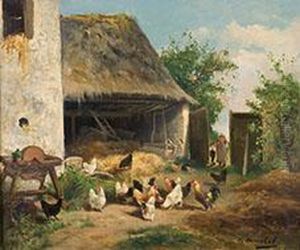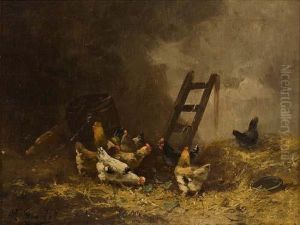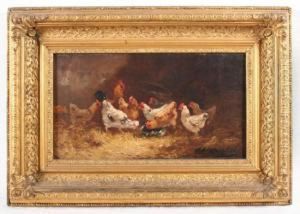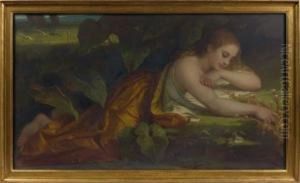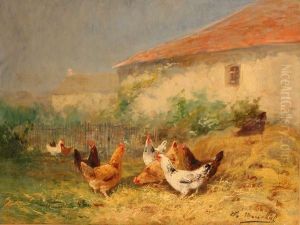Charles Laurent Marechal Paintings
Charles Laurent Maréchal was a French painter born on May 28, 1801, in Metz, France. He was known for his work as a landscape painter and for his role in the development of the Metz school of painting during the 19th century. Maréchal's early interest in art was evident, and he pursued his passion by studying at the École des Beaux-Arts in Paris. During his studies, Maréchal was influenced by the Romantic movement, which was sweeping through the European art world at the time. He was particularly inspired by the works of artists like Théodore Géricault and Eugène Delacroix, whose dramatic and emotional style resonated with Maréchal's own sensibilities.
Maréchal's career took a significant turn when he returned to his hometown of Metz after completing his studies in Paris. There, he became a central figure in the local art scene, teaching and mentoring young artists. His landscapes and historical scenes often depicted the lush countryside of his native Lorraine and the architectural beauty of Metz, capturing the essence of the region's natural and built environments with a keen eye for detail and a lush, evocative palette.
Despite not being as widely known as some of his contemporaries, Maréchal's contribution to French art was substantial. He exhibited his works at the Paris Salon, an official art exhibition of the Académie des Beaux-Arts in Paris, and received recognition for his artistic achievements. His role as a teacher and mentor also helped shape the next generation of artists from the Metz region, ensuring that his influence would endure beyond his own works.
Charles Laurent Maréchal passed away on December 29, 1887, in Metz. His legacy lives on through his paintings, which are held in collections both in France and internationally, and through the artists he inspired during his lifetime. Maréchal may not have achieved the same level of fame as some of his peers, but his dedication to his craft and his impact on the regional art community in Metz have secured him a place in the annals of 19th-century French art history.
